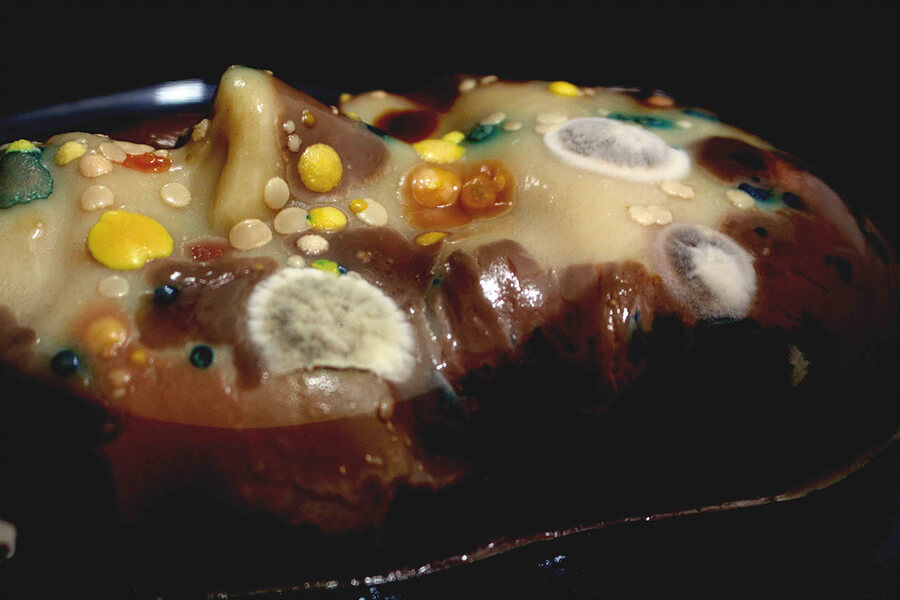Is a portrait fully complete without portraying the millions of bacteria that live on our skin? Mellissa Fisher makes them the focus of her self-portraits.
British artist Mellissa Fisher creates quite unique portraits. The material for her face sculptures is agar rich in nutrients, the same one that scientists use to grow bacteria and fungi in the lab. Using a swab, she then transfers her own facial microbes to the sculpture, “to make the invisible world visible.”
These self-portraits are alive and change over time as microbes grow and die. They represent the tight relationship we have with them despite not being able to see them. We know now that our microbiome — all the microorganisms living inside and on us — is essential for our health and well being, and that its disruption can lead to disease. Fisher’s portraits puts them at the very center of her pieces, highlighting the big role they play in our lives.

Fisher worked with Professor Mark Clemens from the University of Westminster and Dr. Richard Harvey from King’s College London to create these portraits. This collaboration helped the artist get closer to the scientific practice, while helping the researchers explore different ways of culturing and visualizing microorganisms.
Fisher’s self-portraits are on permanent display at the exhibition The Invisible You: The Human Microbiome in Cornwall, UK. She is now working with Dr. Alex Betts from Oxford University, where the team experiments with the incorporation of phages — viruses that selectively infect and kill bacteria — that can render certain areas of the portrait free of microbes.



All materials via Melissa Fisher





